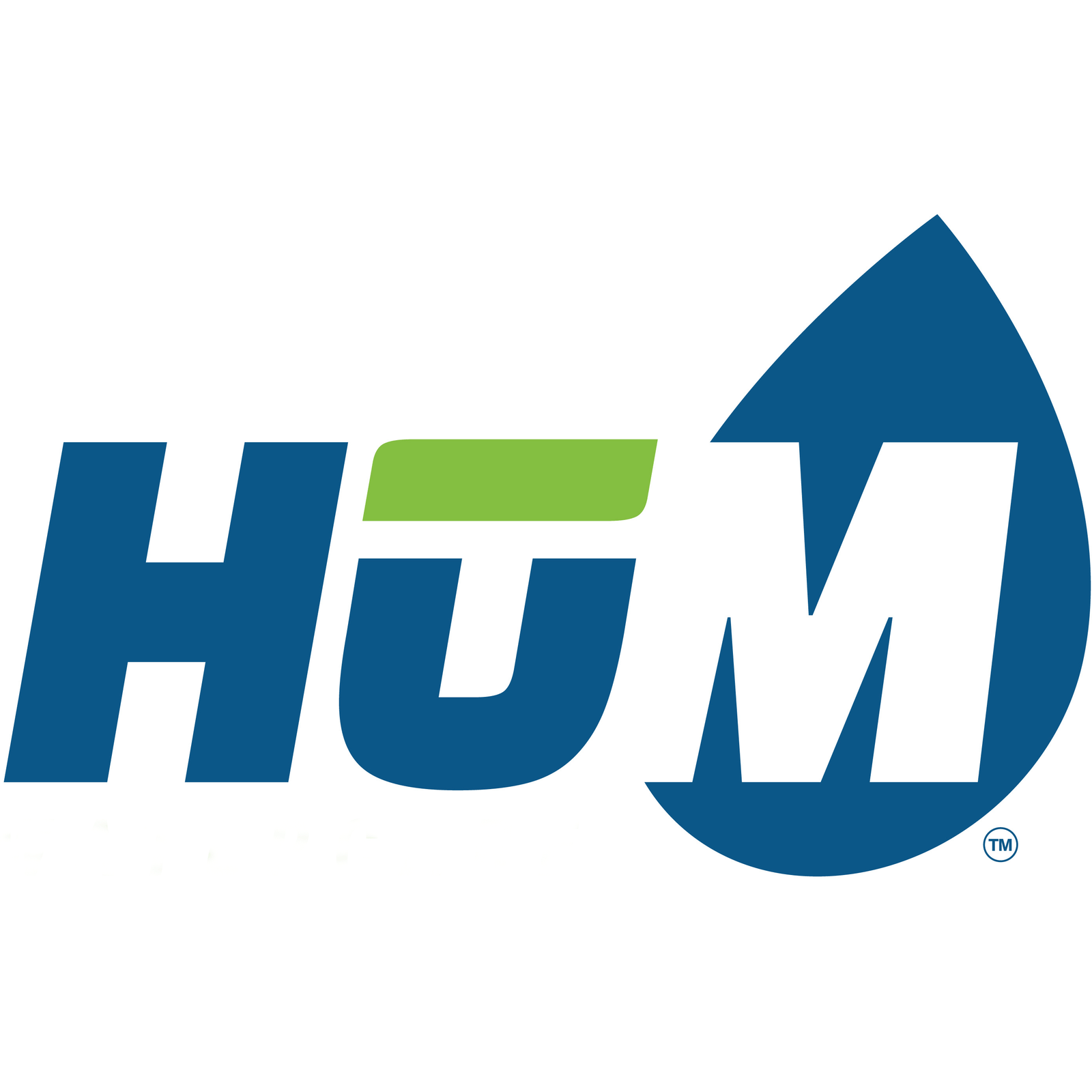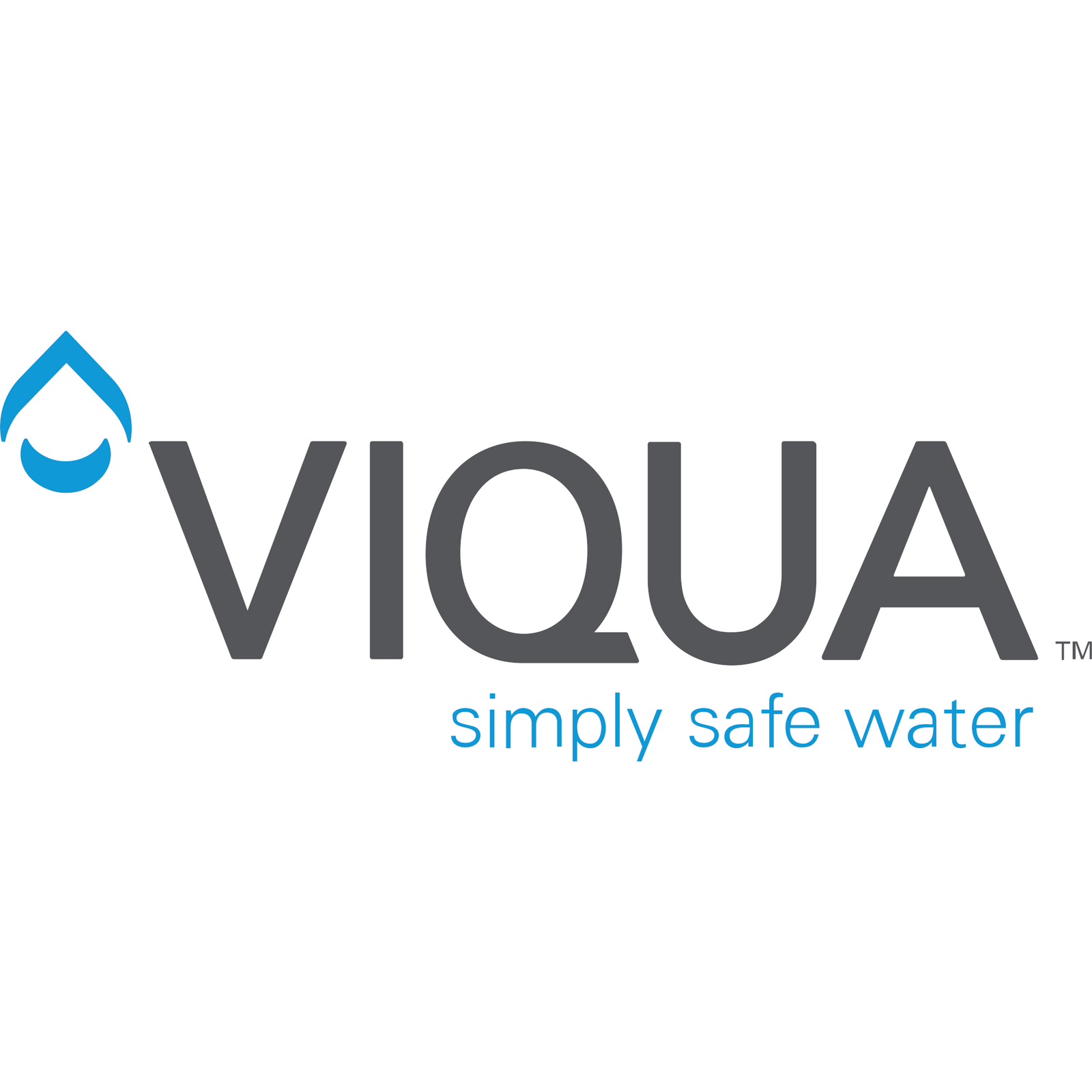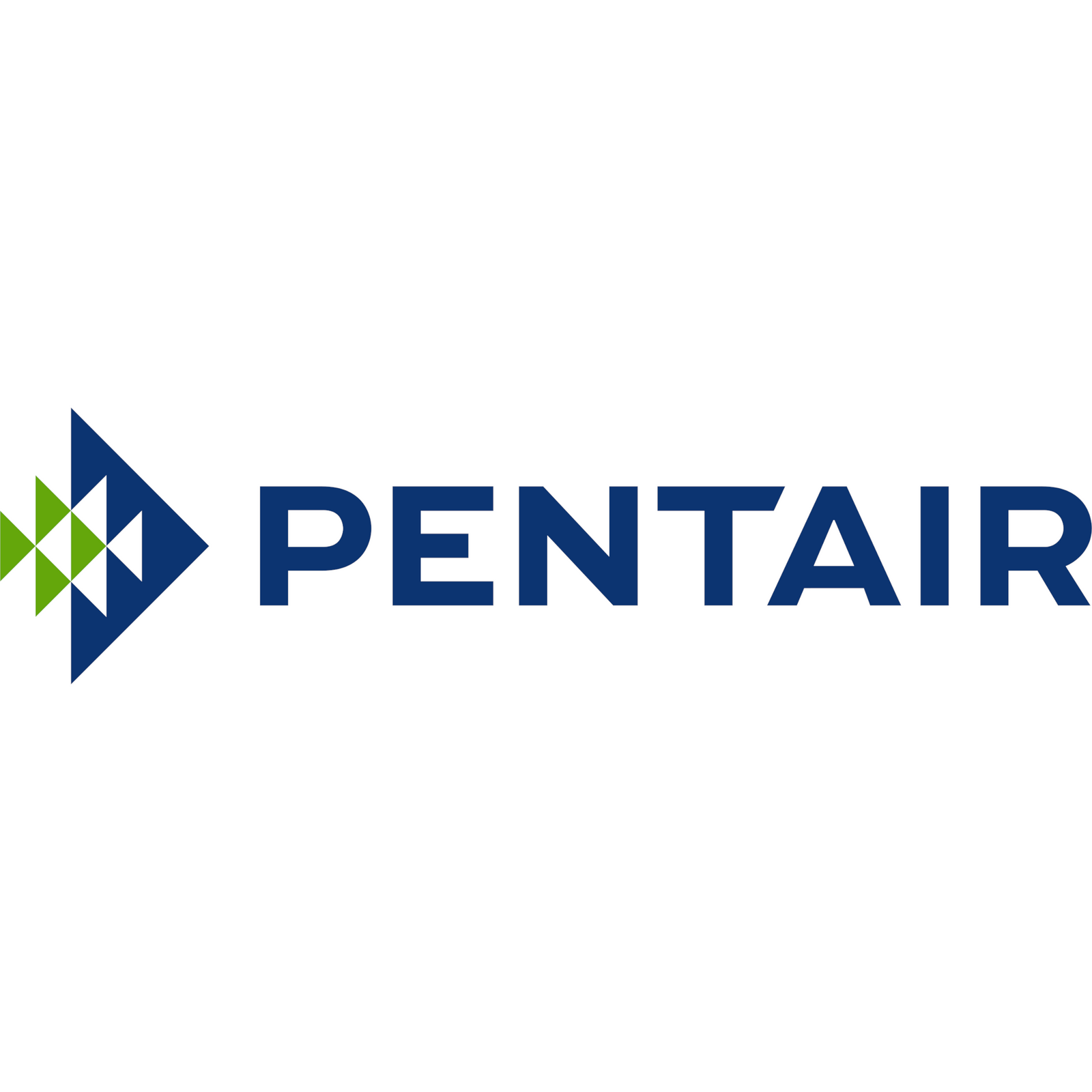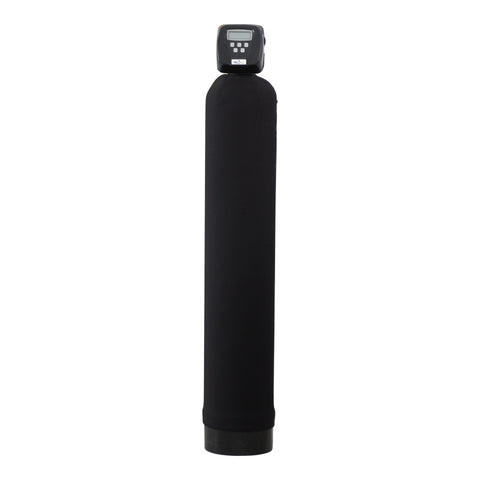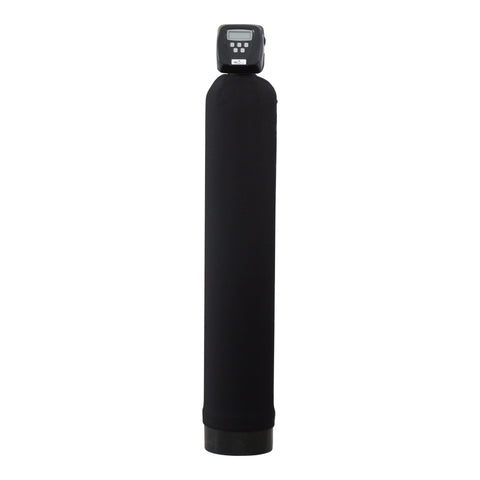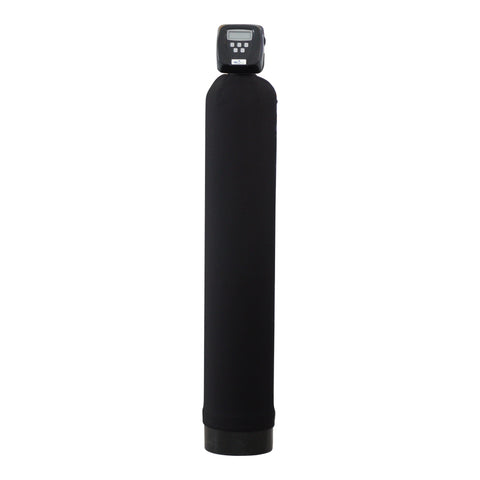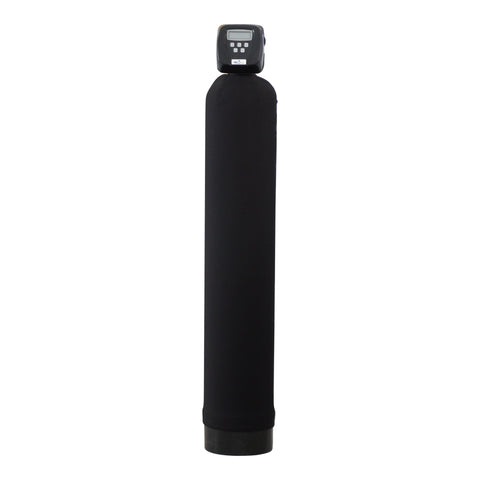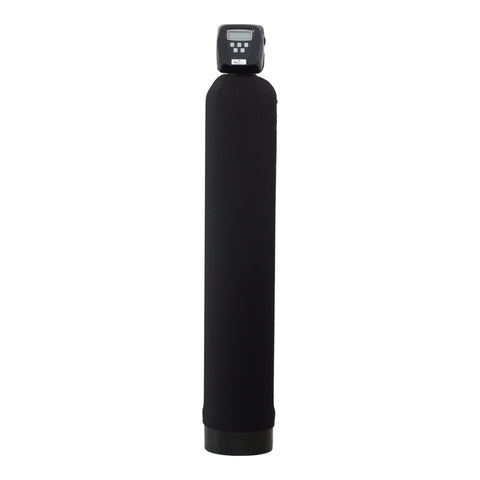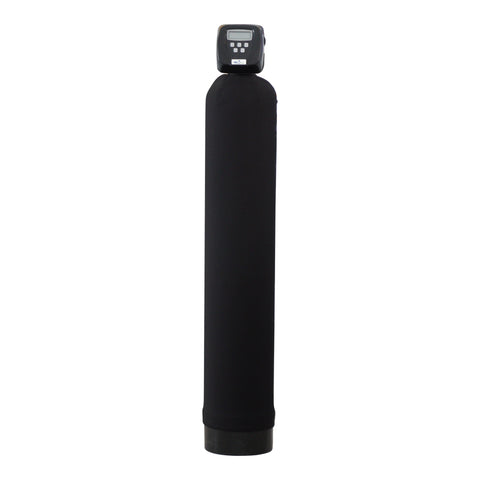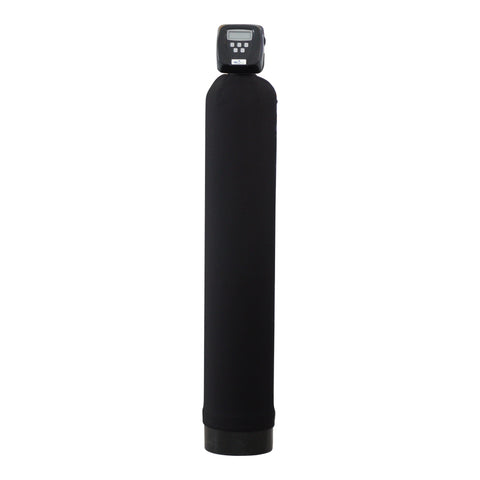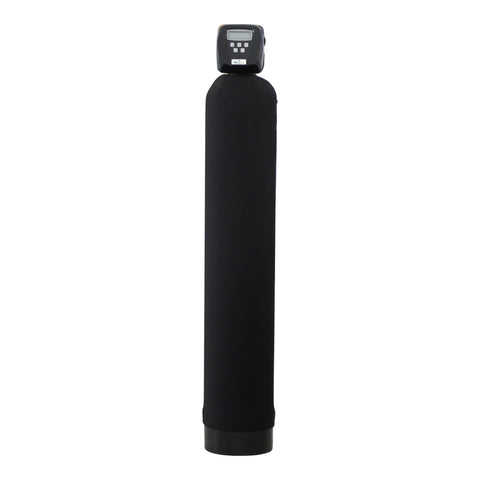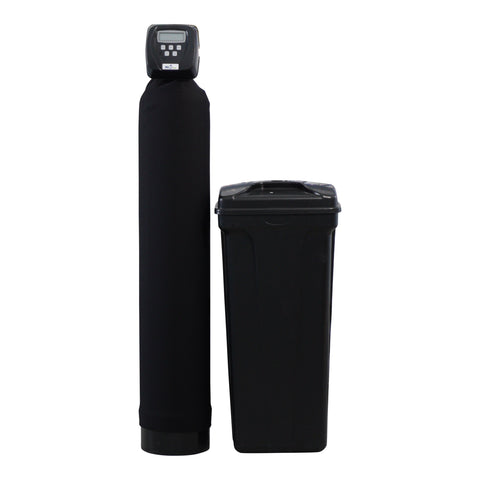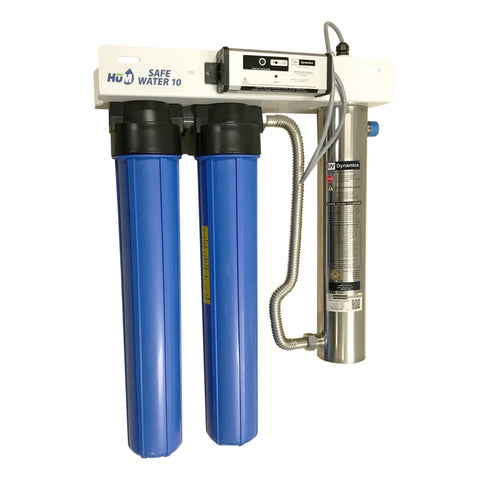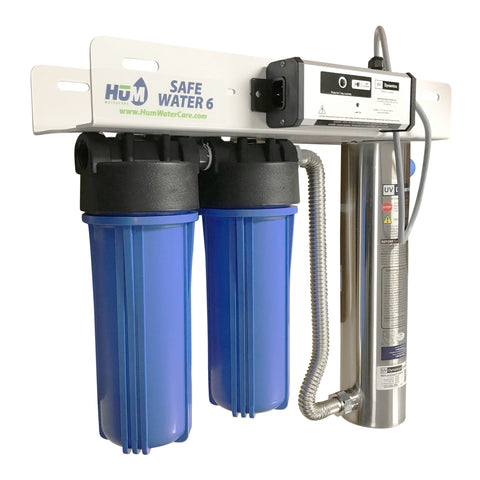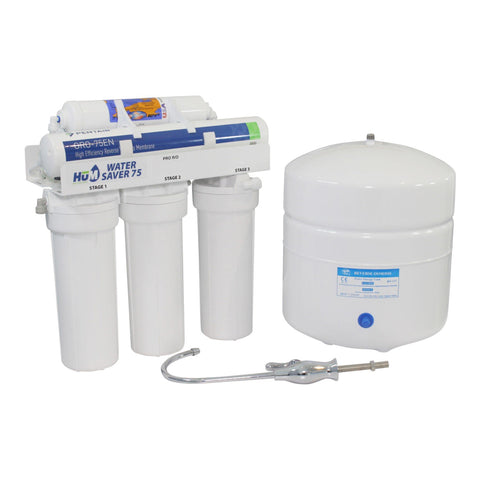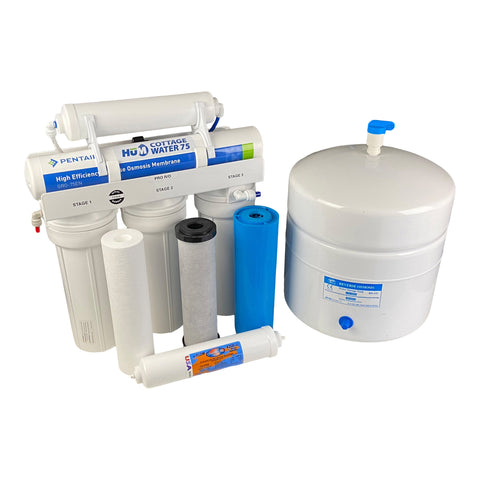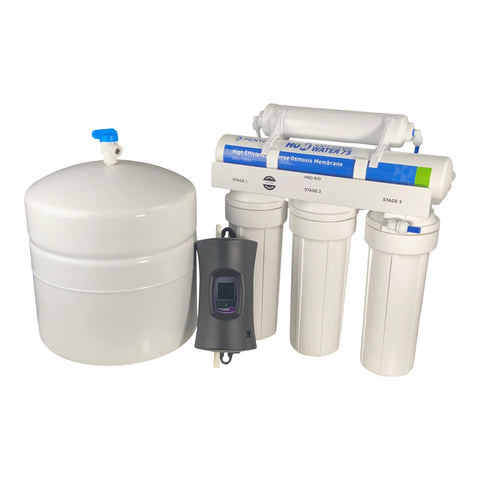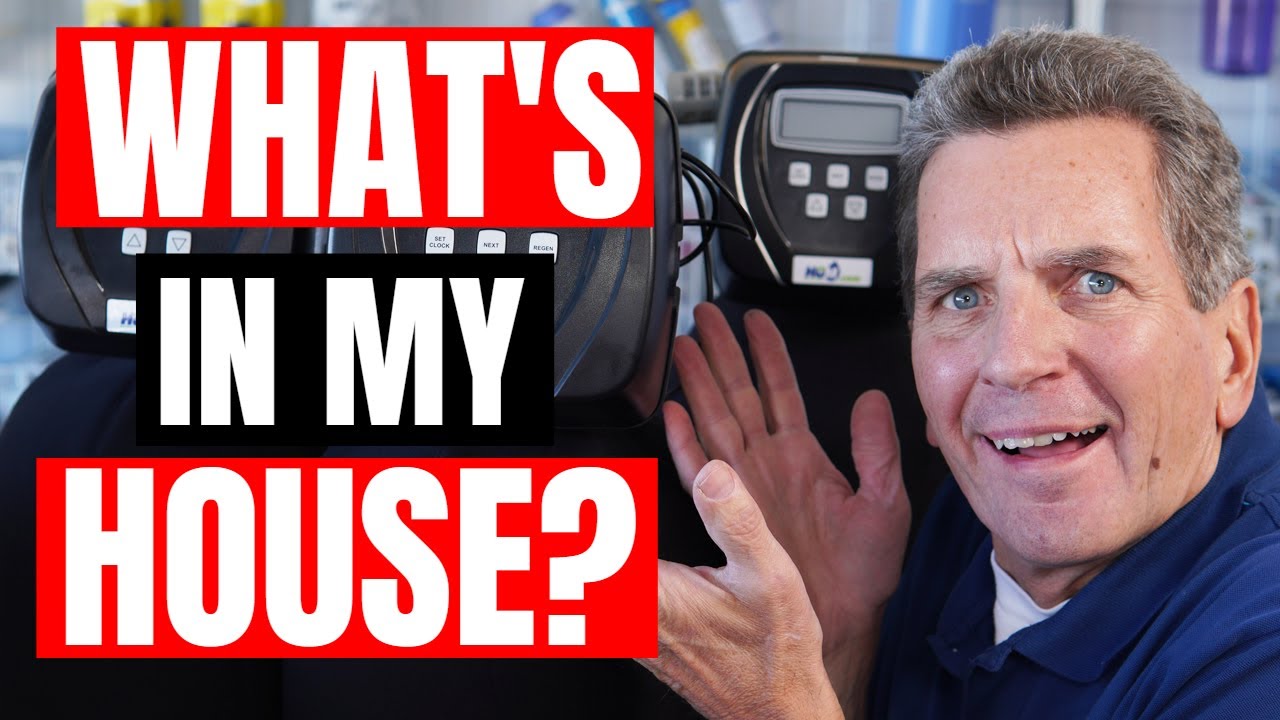
Ever wonder what the professionals use for water filtration for their families? Well, today I’m inviting you into my family's home to take a tour of my own water filtration system. Along the way, I’ll be explaining what I have installed, what I don’t have, and why.
WELCOME TO MY HOME!
 My wife and I live in cottage country, about 100 miles north of Toronto, on beautiful Georgian Bay.
Well water is our home water source.
My wife and I live in cottage country, about 100 miles north of Toronto, on beautiful Georgian Bay.
Well water is our home water source.
Unlike water from a municipal source, well water has not been treated. Since water is a natural solvent, it absorbs whatever minerals it comes into contact with while in the ground. This makes the water hard which, in turn, makes your home much more difficult to keep clean and far less efficient than with soft water.
If you've been following along for some time, you know that I ALWAYS recommend having your water tested before doing anything else so you know what you're dealing with. Here's what's in our water!
In our home, we have a Sulphur smell in our water... which is more commonly known as that "rotten egg smell".
We also have a hardness of 13, iron at 0.8 ppm, a pH of 6.9, and our Total Dissolved Solids (TDS) are 324 ppm.
Other things to consider when thinking about water treatment equipment are what concerns do the home’s occupants have? How many people use the water at that location?
Since we are empty-nesters, there are only two of us here. Our requirements will be different than a family of 4 or 5, which is why this is important to know.
We actually purchased our home from one of my customers and when I spoke to the previous owners, they had staining from hard water and iron, as well as that horrible rotten egg smell. They also wanted better-tasting drinking water.
When we purchased the house, I wanted to make sure the water would always be bacteria-free. Also, having equipment that is made in North America is very important to me.
This is what we have installed in our own home!
So starting from the pressure tank, we have an older technology
Chemical-free Air Birm type system to get rid of the sulphur smell and oxidizing the iron out of the water. It uses a Mazzei and bypass valve to oxidize the water before the pressure tank, then the pressure tank and off-air tank give it contact time and release some of the air before going into the media tank.
I choose this system because it is a well-proven technology that lasts a long time. When it was installed about 9 years ago, it was the best way to get rid of both iron and sulphur.
For new installs, we now recommend
FOB/FOC/FOK Chemical-free systems as they are better units and newer technology. This being said, it’s not worth replacing our current system yet because our current system still works great! Just after the pressure tank, we have an essential Flo by Moen
leak detection and water monitoring system. This is something you will hear me talking about on repeat as we went through a huge tornado insurance claim 10 years ago and know the serious damage flooding can have on a home or business - we experienced it first-hand and it was devastating. Since that event, I have made it my mission in life to ensure I do everything possible to minimize the chances of ever having to go through a claim again!
Just after the pressure tank, we have an essential Flo by Moen
leak detection and water monitoring system. This is something you will hear me talking about on repeat as we went through a huge tornado insurance claim 10 years ago and know the serious damage flooding can have on a home or business - we experienced it first-hand and it was devastating. Since that event, I have made it my mission in life to ensure I do everything possible to minimize the chances of ever having to go through a claim again!
I would highly recommend the
Flo by Moen to anyone who is a homeowner, landlord, or property manager. This smart system ensures peace of mind protection against flooding whether you're at home or away and tracks water usage in your home, among other great features.
Learn more about the Flo by Moen system here.
We then have a standard-efficiency HUM Water Softener. Again, no extravagant bells or whistles necessary - just choose a great Made in North America system with the Clack Valve that is super reliable and will last a long time.
From there it goes on to our Made in Canada HUM Water Care Safe Water Ultraviolet disinfection system. This is a 3-stage system removing not only sediment from our water but also herbicides and pesticides. This is important as the UV kills any bacteria in our water. We have a solenoid kit attached to this system so if ever the bulb failed, or power was off, the system is shut down and water is prevented from flowing through the UV until power is restored and the UV light is back on.
 Our
HUM Water Saver Reverse Osmosis (RO) drinking water system is Made in USA and is a high efficiency 75 gpd because we drink a ton of water! It’s a very high flow system that was chosen since we use lots of water, not just for drinking and cooking, but also in a portable humidifier in the winter. Our RO system has the second tank directly under our kitchen sink with a T that connects to our fridge so we get to enjoy crystal clear ice cubes as well!
Our
HUM Water Saver Reverse Osmosis (RO) drinking water system is Made in USA and is a high efficiency 75 gpd because we drink a ton of water! It’s a very high flow system that was chosen since we use lots of water, not just for drinking and cooking, but also in a portable humidifier in the winter. Our RO system has the second tank directly under our kitchen sink with a T that connects to our fridge so we get to enjoy crystal clear ice cubes as well!
Outside the house, all of our outdoor water faucets are untreated water which we use for watering the lawn and gardens. The only exception to this is the faucet that goes into my garage which has treated water that I use for washing my car so we don't get any dreaded water spots!
So that’s my house... what's in yours?
To learn more about water filtration for your family, click up here and I’ll see you there!
Video Transcript
Gary The Water Guy:
Have you ever wondered what the pros use for water treatment for their families in their homes? Is it was a state-of-the-art rocket science kind of stuff that's only available to them, maybe they're testing it? Or is it older equipment that maybe equipment was replaced for a customer, and it's been rebuilt, and that's what they have installed in their homes? Well, today I'm going to invite you into my home to see what I've got, why I've got it, and we're going to be starting right now.
Gary The Water Guy:
Hi, I'm Gary The Water Guy, and I simplify water filtration to help you conquer crappy water for your family. Welcome. Today, inviting you into my home to check out my water filtration system and I can explain it to you.
Gary The Water Guy:
So, first some background, we're in cottage country about 100 miles north of Toronto, Ontario, Canada. And so, because of that, we're on well water. And so, whenever you're dealing with well water, or actually municipal water, you need a water test. We need to know what we're dealing with. And we also need to know a few things, concerns, the homeowners concerns. Are they sustaining, is there a smell, et cetera? And all those things need to be addressed. So, let's start there.
Gary The Water Guy:
So, I tested the water and these are the things that we needed to address. So, the water tested with the hardness of 13 and the after the water softener showed a hardness of 0, not surprisingly. Iron was 0.8 parts per million. You start to get staining at 0.3 parts per million. So, again, I wasn't totally shocked to find that there was iron staining going on here. After the iron filter, we got 0. pH was 6.9 and, again, that's an important consideration when you're determining which type of iron equipment you're putting in, iron removal equipment et cetera, an important to thing to test. TDS, which stands for total dissolved solids, is the total mineral content of the water. It came in at 324 parts per million. After the equipment, except for the reverse osmosis, we got 346. And after reverse osmosis, we were getting 18 parts per million.
Gary The Water Guy:
So, these are the concerns we had to address too. Now, I should mention that we've only lived in this home for four years. We bought this home from a customer. And that customer already addressed a number of these things when we put a majority of this equipment in about 9 or 10 years ago. So, some of their concerns are similar to ours, and that is the sulfur smell. No one likes that. The rusty stains, again, it was staining the fixtures, the toilets, shower, et cetera. Scale build up, whenever water was spilled around the faucets and that there were scale buildup everywhere, so they wanted that addressed.
Gary The Water Guy:
The potential for bacteria. Again, I tell folks there's two kinds of people that by ultraviolet disinfection systems. The kind of people that have bacteria and want to get rid of it, the kind of people that never want to have bacteria. We never want to have bacteria. And so, that's why we made sure we addressed that. We also were concerned about water leakage, or infiltration. In other words a water spill, or a water leak. I went through a huge insurance claim 10 years ago when a tornado destroyed the building in which The Water Store was located. And so, I know what it's like dealing with insurance companies. I know what it's like dealing with the water claims, et cetera. And so, I wanted to make sure I could do whatever was possible to minimize the chance of ever having that in our home for our family, and disrupting our family life like that again. And great tasting drinking water, everyone wants that.
Gary The Water Guy:
So, this is where the water comes in from the well, and then this is a Mazzei with bypass and basically how this works is as the water flows through here, there's a venturi in here, a very small opening. And what that does, it creates a suction and it sucks in air through here. This is the first of the three parts that are part of the air berm system. And we're sucking in air to oxidize out the iron and the sulfur out of the water. This bypass here, the water can also take a route around here. So, by closing the bypass, the more we close it, the more air that gets sucked in. The more we open it, the less air that gets sucked in. And so, we need to control that.
Gary The Water Guy:
We only have about 4 1/2 gallon per minute flow rate coming from our well so, because of that, if we close this down too far, it's going to slow down the water even more. And then, we won't have much water for showering, or doing laundry, or things like that. So, it's important to control. If we leave it too far ope, then it doesn't suck in enough air to oxidize the iron sulfur out of the water.
Gary The Water Guy:
Then, when the water leaves here, it takes this big lazy loop around. And the reason we do that is because elbows slow down the flow even more. So, this big, easy loop maximizes the flow rate coming through here. From there, it goes into the pressure tank, leaves the pressure tank and goes onto the whole house.
Gary The Water Guy:
So, after the water leaves the pressure tank, this is the shutoff. And from there, it goes through the Flo by Moen Leak Detection and Water Shutoff System. So, this is a great system and I really love this system. We went through a tornado 10 years ago, had a lot of water damage, and a lot of building damage for our business, The Water Store. And, because of that, I never want to go through something like that again. So, this system is great. It builds a profile of how we use our water, et cetera. And, from there, if it detects that there's a lot of water usage going on in the home at a time when it's not typical, it'll shut down the water in the whole house. It'll send me a text message, an email, and actually call me to tell me that there's a problem. From there, I can remotely turn my water on or off using my smartphone. It's a great system, gives me lots and lots of peace of mind.
Gary The Water Guy:
From there, it goes up through our air berm system. So, there's three parts to the air berm system. So again, I should mention, this is a little bit older technology. These days, we'd still go with a chemical freeze type system, but instead of an air berm, these days we would go with an FOC, FOB, or FOK depending on the iron content of our water. So, like I say, there's three parts to a air berm system. There's the Mazzei injector. And then, from there is the off air tank, and then there's actual media tank. So, the Mazzei injector sucks in air, and oxidizes the iron and the sulfur out of the water.
Gary The Water Guy:
The off air tank releases that air, so it's had the contact time to do its job. And then, from there, it goes through the media tank, which traps the oxidized iron and sulfur in the water. And then, a backwash is every three days. So, again, chemical free type system. We've avoided the ozone, and the chlorine injection, and some of the other chemical injection systems. I don't like where all those chemicals end up. So, because of that, we've had great success with these chemical free systems.
Gary The Water Guy:
From there, it goes into a water softener, that's 27,000 grain water softener, more than big enough for our family of two, we're empty nesters. But even if a family of five or six moved into this home, it would handle it no problem with the degree of hardness that we have. And, as you can see, we've got neoprene jackets on it, so it avoids the sweating of the tanks, which can damage the floor. And we have our concrete floors here, it's not going to damage it. But it also prevents the mold buildup that goes on there. And these neoprene jackets can be unzipped, they can be washed, and put back on. So, that's a great thing. And, from there, it goes through our ultraviolet disinfection system.
Gary The Water Guy:
So, this is our Hume Safe Water 10 Ultraviolet Disinfection System. It's a three-stage system. So, the first stage is a sediment filter. The second stage is a carbon filter. And the last stage is an ultraviolet light. So, with this system, it's North American made, system's actually made in Canada. And so, the water flows through there. We also have a solenoid connected to it. And the reason we have a solenoid is that if the power goes off, or if the lamp fails, for whatever reason, it shuts down all the water, and that we don't have to worry about any untreated water contaminating the system downstream of the ultraviolet disinfection system.
Gary The Water Guy:
You'll also notice that we have a shutoff over here. This is where the water's coming from the water softener going into the UV when it's time to change the filters, and to replace the UV lamp, and to clean the sleeve. And you can also see there's a shutoff here to keep the water from the hose draining down. You can also see the pipe installation I have here and it's to keep the pipes from sweating, especially in the warm summer, humid weather, et cetera. You can also see that we've got a power bar here, a surge suppressor. And what that does it makes sure that, again we're in cottage country, that we don't have brown outs, and power outages, et cetera. And it maximizes the life of the electronic components that are here. And this is the controller for the solenoid.
Gary The Water Guy:
So, this is our reverse osmosis drinking water system. It's a Hume Water Saver 75, which is a high efficiency, reverse osmosis system, very little water going to waste. And so, it has the high efficiency membrane. It's a five-stage system, but it's had the calcite filter added on to partially re-mineralized the water. My wife was looking for that. She wanted the water a little bit more alkaline. And so, that's what's been added. I've got another video on my YouTube channel that shows you how to do that. And it's also got one of the two tanks. So, we actually use two tanks to maximize flow. So, there's one tank here and the other tank is right underneath the kitchen sink.
Gary The Water Guy:
Now, because our utility area here has an unfinished ceiling in it and the kitchen is pretty much right above here, all this equipment is downstairs here. So, it frees up space for underneath the kitchen sink for whatever goes underneath the kitchen sink. And, obviously, this could also be mounted underneath the kitchen sink, but it frees up space having it down here.
Gary The Water Guy:
Here, you can see the second reverse osmosis tank we have. This is immediately underneath our kitchen sink. And what that does, it gives you a lot more flow and a lot more quickly for a longer period of time having the two tanks, and especially having this one immediately underneath the faucet where it's being used. As you can see, there's a T in the line, and this has 3/8 inch tubing, it's part of the Water Saver 75. That's what gives you that great flow. There's also a T in this line that connects it to the fridge for the ice maker in there. So, we've got nice crystal clear, reverse osmosis ice cubes coming from our ice maker.
Gary The Water Guy:
All of our outdoor faucets are all untreated water. That water's used for watering the lawn, the gardens, et cetera, except the faucet that goes into the garage. I have treated water going into the garage. I'm a car nut, I love washing my cars. And I want to make sure they won't get those hard water spots all over them.
Gary The Water Guy:
To learn more about water filtration, what it can do for your family, click up here for my next video. And I'll see you there.


